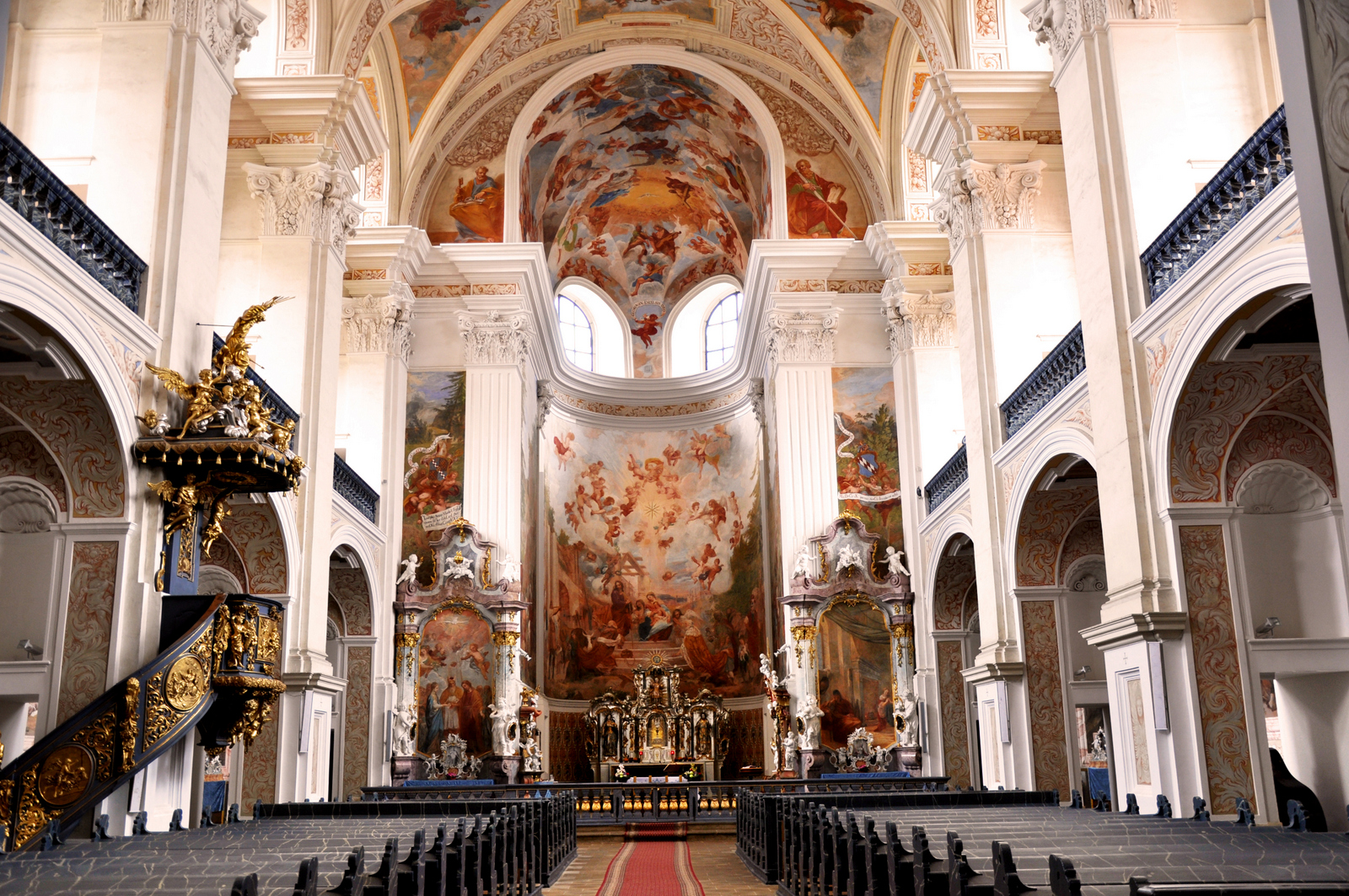
St. Joseph Church
Although located by the monumental Basilica, it is not in its shadow. Its facade, similar to the one of Roman churches, catches the visitors’ eye but it is only a foretaste of what is to be seen inside – a wonderful treasure of European culture – the biggest series of frescoes found to the north of the Alps. The paintings showing the history of Saint Joseph are firstclass works of art and their author, Michael Willmann, is referred to as the „Silesian Rembrandt”. We do not know the architect of the church. It was erected to the order of abbot Bernard Rosa in 1690-1696, in the place of the demolished medieval parish church of Saint Andrew, and was intended for the Brotherhood of Saint Joseph, established by the Abbot in 1669. Built in the Baroque style, it was originally designed with two towers but they collapsed in 1693 during the construction works. They were not rebuilt and thus the triangle-topped facade has remained towerless. Martin Urban, the master bricklayer in the monastery, lost his job. Following the disaster, the work was completed by Michael Klein of Nysa. The church was consecrated on May 7, 1696. It was constructed as a hall church with galleries (one nave with side chapels on both sides and galleries above them) on a rectangular plan and north-south axis, covered with a gable roof. The chancel is significantly elongated at the north end and terminates in an apse flanked by sacristies. Such a shape of the chancel enabled the panoramic presentation of the scene of the Adoration of the Magi. The high altar was carved by J. A. Lachel in 1775, and the tabernacle comes from the main altarpiece of the former monastery church in Krzeszów. The side altars are decorated with paintings depicting the joys and sorrows of St Joseph. The pulpit and the organ also deserve special attention.
